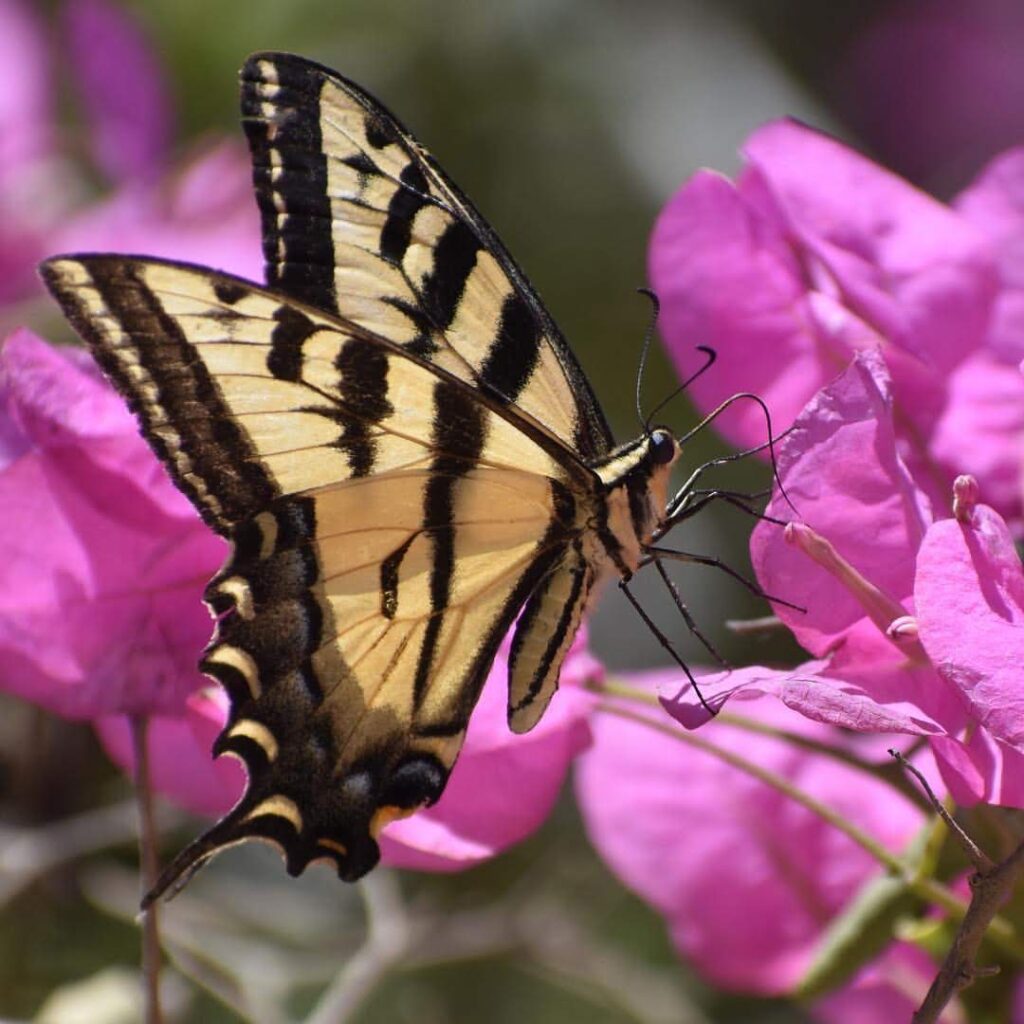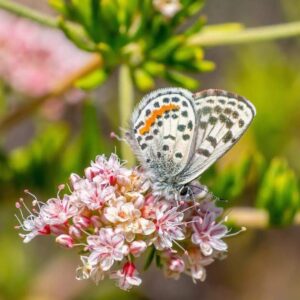Bringing Back Butterflies

Western Tiger Swallowtail
The abundance of butterflies in Crystal Cove this time of year is always a welcome sight. Their bright colors and delicate flight help bring the park to life after the winter rains. If you walk along the trails in Moro Canyon this summer, keep your eyes out for Western Tiger Swallowtails floating by the sycamores, Behr’s Metalmarks darting between buckwheat flowers, or Funereal Duskywings dancing on the ridge tops. But butterflies are more than just pretty to look at- they can also help us understand the health of our park. They can be a key indicator of a diverse and healthy ecosystem. Butterflies lay eggs and feed on very specific plants, and each butterfly is associated with a different plant or groups of plants. If we have lots of different species of butterflies, this indicates that we have lots of different types of plants to support them.

Sara Orangetip
Crystal Cove State Park’s threatened coastal sage scrub plant community is home to over 30 different butterfly species. Located only in low lying coastal areas of Southern California, coastal sage scrub is home to numerous plants and animals that can be found nowhere else on the planet. Some butterfly species, such as the Bernardino Blue, never stray far from buckwheat, their food of choice, so their survival is dependent on the presence of buckwheat in coastal sage scrub plant communities. Crystal Cove State Park land managers aim to restore and maintain the unique biological diversity of coastal sage scrub, and one of the ways we do that is by monitoring butterfly populations. Crystal Cove Conservancy staff and volunteers walk the trails of Moro Canyon and record their butterfly and plant observations each month to track any changes in our butterfly population over time.

Bernardino Blue on California Buckwheat
Our butterfly populations can also give us an insight into the possible effects of climate change on the ecosystem in our park. Butterfly life cycles are heavily tied to seasonal cues, like temperature and light to help them time their emergence to their preferred plant. Shifts in climate might get plant life cycles out of sync with butterfly life cycles. Will plants begin to bloom sooner, and if so, will butterflies be able to adjust so they have the resources they need? By tracking butterflies regularly in the park, we hope to be able to monitor these potential changes.

Cabbage white, a common non-native butterfly.
We have several butterfly routes that pass through different habitats in the park including riparian, coastal sage scrub, and degraded landscapes dominated by non-native species. One particularly interesting route passes by a restoration project in the park. The restoration site known as “The Bowl” was converted to non-native grassland by years of cattle and sheep grazing, and is now being restored to native coastal sage scrub and native grassland through a multi-year experiment in partnership with Crystal Cove State Park, The Center for Environmental Biology at UC Irvine, and Crystal Cove Conservancy. By tracking butterfly populations over the course of this process, we can assess how well the restoration is working, and if it supports more native biodiversity as the restoration progresses.

Restoration at The Bowl
At the beginning of our butterfly monitoring program in 2017, and before restoration began, The Bowl route had two butterfly species present: non-native Cabbage Whites, and Sara Orangetips. These are the two species known to nectar on Black mustard, the dominant non-native plant species present in the area. Surveys with zero butterfly sightings were also common outside the short flowering period for black mustard. We now have two more years of butterfly data collected during the restoration process at The Bowl.
